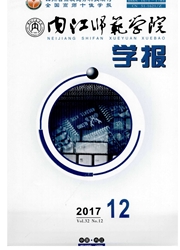

 中文摘要:
中文摘要:
基于高精度DEM和两期土壤侵蚀强度分布图,在ARCGIS9.0和景观格局分析软件FRAGSTATS3.3的支持下,计算出1994年和2003年两个年份朱溪河流域不同坡度等级下的景观格局指数并作对比分析.结果表明:不同坡度等级内的各景观类型结构变化存在较大差异;在景观水平上,侵蚀景观格局变化呈较明显的坡度分异特征.随着坡度增加,香农多样性指数和均匀度指数均先增后减,最大变化率均在坡度大于35°等级上;而最大斑块指数先减小,后增大,然后又减小,变化幅度最大值在坡度小于5°等级上.在各坡度等级上的各景观类型最大斑块指数变化值无明显的坡度分异特征.人类活动的干预,是驱动该流域侵蚀景观格局变化的主要驱动因素.
 英文摘要:
英文摘要:
The slope is derived from high accuracy DEM created from the topographic contour map (scale = 1 : 10000). The soil erosion dataset obtained by USLE were overlain with the slope factor. With the support of ARCGIS 9. 0 and FRAGSTATS 3. 3, the indexes of eroded landscape pattern in different slope grades in 1994 and 2003 were calculated, compared, and analysed. The results showed that: (1) the compositions of eroded landscape in different slope grades were very different, and the slope variation from 1994 to 2003 was also varied. (2) On the landscape scale, the eroded landscape patterns' changes affected by slope variation were obvious. With the increase of slope, the Shannon's Diversity Index and Shannon's Evenness Index increase and then decrease by 0.21 and 0.11 correspondingly. The largest changing rate was above 35 degree, and the Largest Patch Index decreased, increased, and then decreased again. Its largest changing rate respectively in the slope grade one was less than 5 degree. On the landscape element scale, in every slope grade, the Largest Patch Index did not change following the slope variation. Human activity is the foremost driving factor for the dynamic changes of spatial pattern of landscape in this study area.
 同期刊论文项目
同期刊论文项目
 同项目期刊论文
同项目期刊论文
 期刊信息
期刊信息
